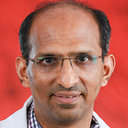Potential markers of heavy training in highly trained distance runners.
Ключевые слова
абстрактный
Markers of a heavy increase in training were examined in ten highly trained distance runners (mean(s.d.) age 29.8(1.7) years, maximal oxygen intake 65.3 ml kg-1 min-1, personal best 10-km time 31 min 4 s) who undertook a deliberate 38% increment of training over a 3-week period. Their running performance did not improve, and six of the ten subjects developed sustained fatigue, suggesting that training was excessive, although the full clinical picture of overtraining did not develop. The Profile of Mood States was the best single marker of disturbed function, indicating increased fatigue and decreased vigour. There were no useful changes of resting heart rate or perceived exertion during submaximal running, sleep was undisturbed, and there were no orthopaedic injuries. Two subjects developed rhinoviral infections following the heavy training, and a third complained of symptoms that were diagnosed 2 weeks later as exercise-induced asthma. The increase of serum cortisol normally induced by 30 min of submaximal exercise was no longer seen when the same acute exercise was performed after heavy training. Resting lymphocyte proliferation tended to increase in response to phytohaematoglutinin (PHA) and concanavalin A (Con A), the ratio of helper to suppressor cells (H/S) decreased, and pokeweed mitogen induced smaller increases in IgG and IgM synthesis. Whereas before heavy training, PHA-stimulated lymphocyte proliferation was unchanged by 30 min of acute submaximal exercise, after 3 weeks of heavy training the same bout of exercise caused an 18% suppression of proliferation. Likewise, heavy training brought about a decrease of T-lymphocytes in response to acute submaximal exercise, but an abolition of the acute exercise-induced decrease in the H/S ratio. The previously observed exercise-induced decrease of IgG synthesis did not occur when the same acute bout of exercise was performed after heavy training. We conclude that such minor and transient changes of immune function may possibly be a warning that training is becoming excessive, but they have only a limited significance for overall immune function.


